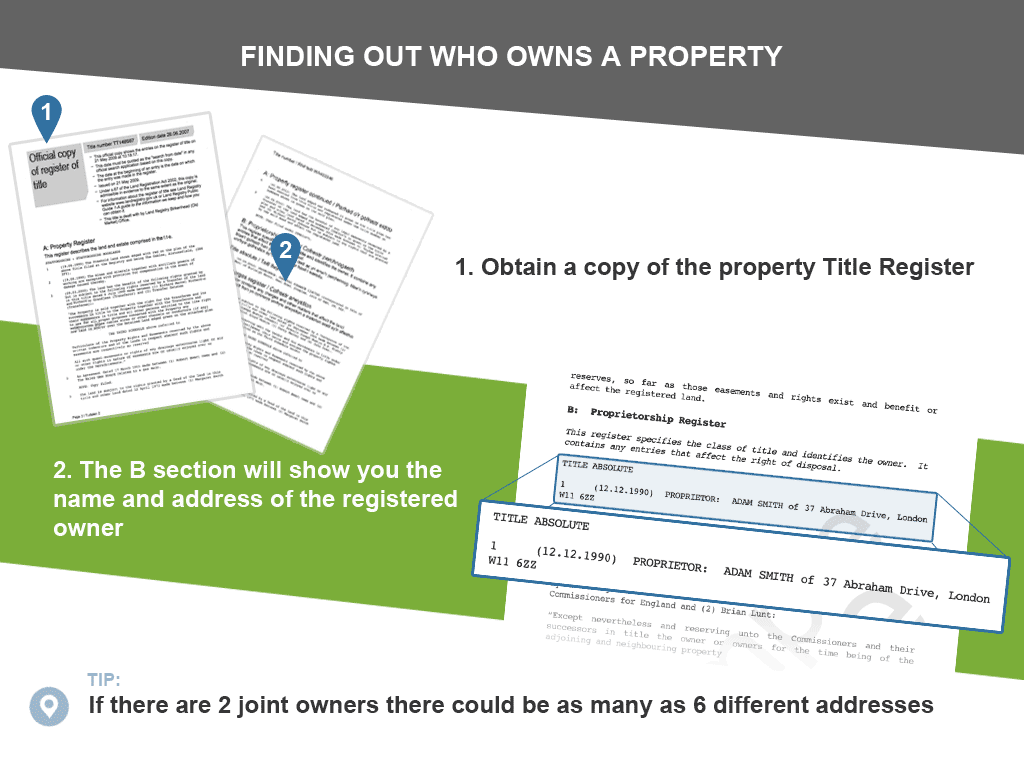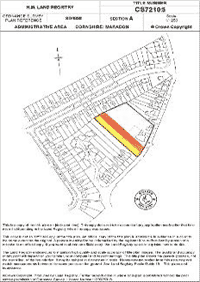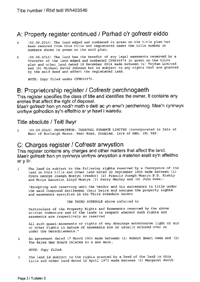Finding the Ownership of a Property
Overview
Many of our customers are keen to ascertain the ownership details of a property. This may be to help them make an offer on a property that is not advertised for sale, to obtain a clearer picture of the ownership history, to check that they are themselves are shown as the owner or for many other individual reasons.

Title Register
All registered properties contain the name and address of the current owner of the property. These details are held in Section B of the Title Register. The only caveat you need to be aware of is that some properties may contain more than one ownership, e.g. a large house that is divided into flats may have a freehold Title and a separate leasehold Title for each of the flats. So long as you correctly identify the property, e.g. by including the flat number in the address, there should be no problem.
An example of a Title Register’s Section B containing the owner’s contact details is:
B : Proprietorship Register
This register specifies the class of title and identifies the owner. It contains any entries that affect the right of disposal.
Title absolute
1 (30.10.2010) Proprietor: James Alexander Barcus and Juliette Margaret Barcus of 10 Strethfield Avenue, Whelmsdale LE19 3SR.
2 (30.10.2010) The price stated to have been paid on 17 September 2010 was £600,000.
The entries above show that James and Juliette Barcus were registered as purchasers of their property on 30 October 2010 and that they paid £600,000 for it when completing the purchase of their property on 17 September 2010. The entry shows both the date of purchase in September and the date of registration in October. The entry also shows that they purchased the property in joint names. As there is no Form A Restriction in Section B they would have purchased the property as beneficial joint tenants, rather than as tenants in common.
Joint Tenancies and Tenancies in Common
A Form A Restriction would appear as follows:
3 (30.10.2010) RESTRICTION: No disposition by a sole proprietor of the registered estate (except a trust corporation) under which capital money arises is to be registered unless authorised by an order of the Registrar or the court.
The Land Registry do not enter Form A Restrictions into the Title Register unless an application is made for it. By default, and as such an entry does not appear in their Title Register their registration is as beneficial joint tenants.
Title Register
The Land Registry Title Register holds data relating to the property ownership, purchase price, mortgage, tenure, covenants, rights of way, leases and class of title.
£19.95Title Plan
The Title Plan shows an outline of the property and its immediate neighbourhood, and uses colours to identify rights of way, general boundaries and land affected by covenants.
£19.95Associated Documents
Deeds creating Restrictions, Covenants, Easements, etc. are often kept digitally by the Land Registry and made available for sale due to their invaluable detail and content to assist in further understanding the Restrictions, etc.
£29.95


